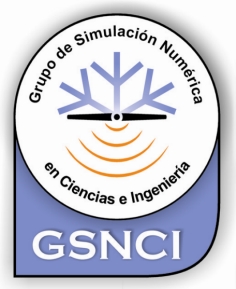Grupo de Simulación Numérica en Ciencias e Ingeniería - GSNCI
 From 1995, glaciology is the core of the research activity developed by the Group of Numerical Modelling in Science and Engineering, granted by subsequent projects from the Spanish State Plan for R&D, the Euroresearch Programme, and the Horizon 2020 Programme from the European Commission. The research themes were later widened to encompass other reseach areas, which currently include computational electromagnetics and dynamical systems.
From 1995, glaciology is the core of the research activity developed by the Group of Numerical Modelling in Science and Engineering, granted by subsequent projects from the Spanish State Plan for R&D, the Euroresearch Programme, and the Horizon 2020 Programme from the European Commission. The research themes were later widened to encompass other reseach areas, which currently include computational electromagnetics and dynamical systems.
Within glaciology, the main research themes are numerical modelling of glaciers and ice sheets, glaciological applications of ground-penetrating radar and the estimate of mass balance of glaciers. The aim of this research is to characterise the current state of glaciers and ice sheets and to estimate their response to climate changes.
The activities of the team include field work, both in Antarctica and the Arctic. The main objective of the field work is to provide input data to the models of glacier thermomechanics and mass balance. In Antarctica, field work has focused on Livingston Island glaciers, and the logistic support has been provided by the Spanish Antarctic Station Juan Carlos I. In the Arctic, it has focused on Svalbard (Norwegian Arctic territory of Svalbard), counting on the logistic support of the Norwegian field camp in Austfonna, the Polish polar station in Hornsund and the Russian polar station in Barentsburg. Numerical modelling of glaciers has also been applied to glaciers in other regions, using field data provided by other research teams.
Regarding computational electromagnetics, we focus on finite element methods, domain decomposition methods, fast frequency sweep techniques, reduced order methods, reduced basis approximations, and their applications to the design of antennas and passive microwave circuits.
Within the area of dynamical systems, our work focuses on the modelling and simulation of systems governed by evolution equations. We consider dynamical systems of both finite dimension and infinite dimension, modelled using differential equations and fractional calculus.

















